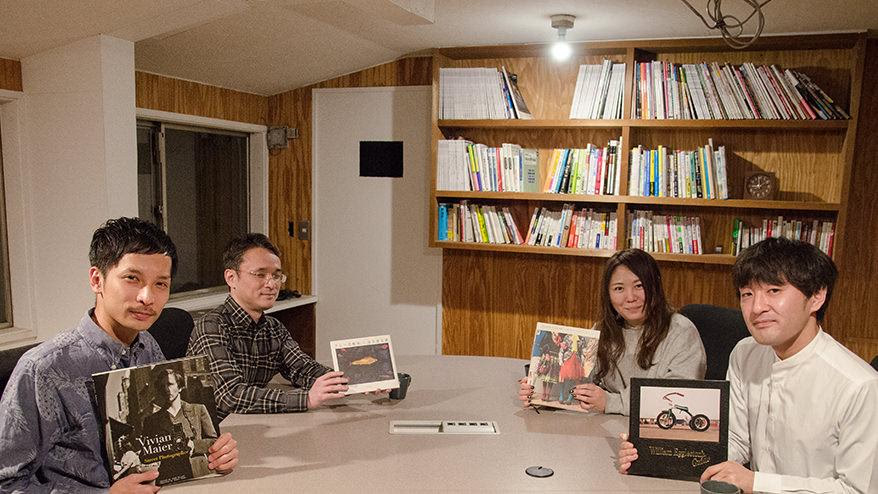I'm Murakami, the library committee chairman.
The new greenery is coming in. Ivy leaves are growing thickly inside Monosus' office.
This time, we changed things up a bit and held a reading group with the theme of books that can be enjoyed visually, such as paintings and photo books.
The good thing about visual books is that even if you're not particularly interested in reading, you can just flip through them and become immersed in the world.
This time, unexpectedly, we have gathered books that are memorable for each of our lives.
Handa, who loves taking and looking at photographs and who worked in a photography studio before joining Monosus, is also participating for the first time.
Now, let's start the reading group!
- Poetry is born from pictures, and music is born from poetry. A picture book born from connections. Paul Klee, Shuntaro Tanikawa (author) "Klee's Picture Book" (introduced by Isamu Murakami)
- From dynamic to static photography: A photo book that reminds me of my roots
William Eggleston, John Szarkowski (author) "William Eggleston's guide" (reviewed by Takanori Handa) - Immerse yourself in the world of the band and relive the memories of the live performance that made you cry Kuronekodou (author) "Channel Guide Tokyo Incidents Official Book" (recommended by Inui Yako)
- A photographer who continued to take pictures of the city with his twin-lens reflex camera was discovered
Vivian Maier (author) “Vivian Maier Street Photographer” (introduced by Keisuke Haga)
Presentation Time
Each person will have 5 minutes to introduce their book.
Pictures give birth to poems, and poems give birth to songs. A picture book born from connections.
Paul Klee / Shuntaro Tanikawa (author) "Klee's Picture Book" (reviewed by Isamu Murakami)
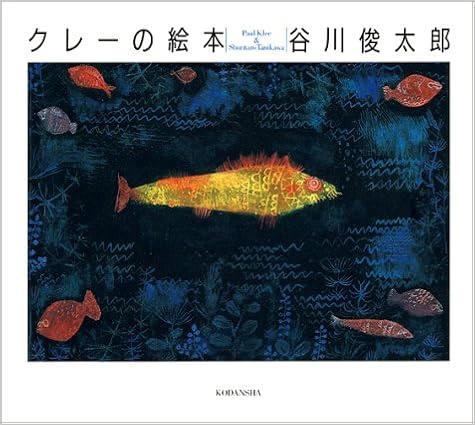
Paul Klee / Shuntaro Tanikawa (author) "Klee's Picture Book" Kodansha (1995) ( Amazon )
 Murakami
MurakamiI brought along a book called "Klee's Picture Book." It is a book of poems by Shuntaro Tanikawa for the paintings of the artist Paul Klee, and I bought it when there was an exhibition of Klee's paintings at the National Museum of Modern Art. It is a picture book in which pictures and poems are roughly alternated.
When I was in university, I was in a choir and we sang a choral piece based on a poem by Shuntaro Tanikawa from "Klee's Picture Book," and that's how I learned about Klee.
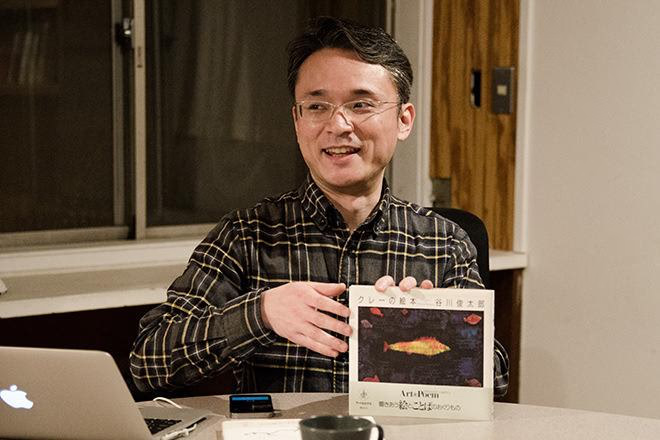
I first learned of Klee through his choral music, and the song's lyrics, written by Shuntaro Tanikawa, were influenced by Paul Klee's paintings, so there are these overlaps...I thought it was interesting that someone like me, who wasn't originally interested in painting, could go from a choral music to the poetry and then learn about Klee's paintings.
I sang it when I was a senior in college, so it left a particularly strong impression on me. So a few years ago, when I found out there was going to be an exhibition of Paul Klee's work, I went to see it.
Paul Klee's paintings are like abstract paintings and are difficult for me to understand, but the poems by Shuntaro Tanikawa show me one way of looking at them and make them easier to understand. I think that's one of the charms of this book.
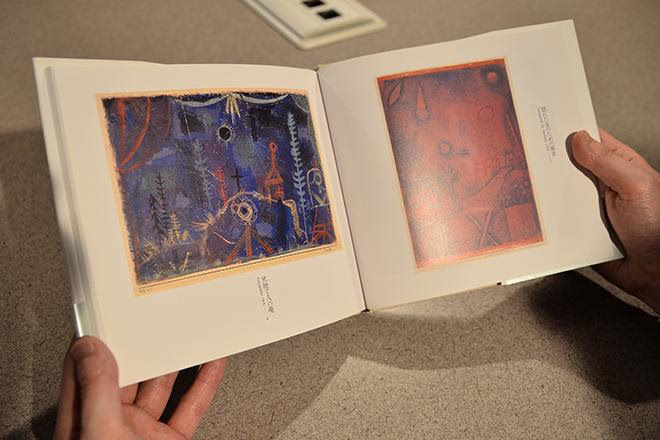
(Left) Einsiedelei (Hall of Recluse) (Right) Landscape for a Woman in Love Landschaft für Verliebte
 Murakami
MurakamiThe picture on the cover is titled "Golden Fish." It's a beautiful picture, but the poem is about the sadness of the food chain: big fish eat medium-sized fish, medium-sized fish eat small fish, and small fish eat even smaller fish...
 Haga
HagaMr. Tanigawa, did you look at Klee's paintings and expand on your imagination to write the poem?
 Murakami
MurakamiIn the afterword, the author writes that the title reminded him of a poem, so it may not have been solely the art that inspired him.
 Dry
DryIt seems like Murakami-san likes this kind of thing. Rather than the flashy primary colors (laughs).
 Murakami
MurakamiYes, I prefer neutral colors (laughs).
From dynamic to static photography: A photo book that reminds me of my roots
"William Eggleston's guide" (reviewed by Takanori Handa)
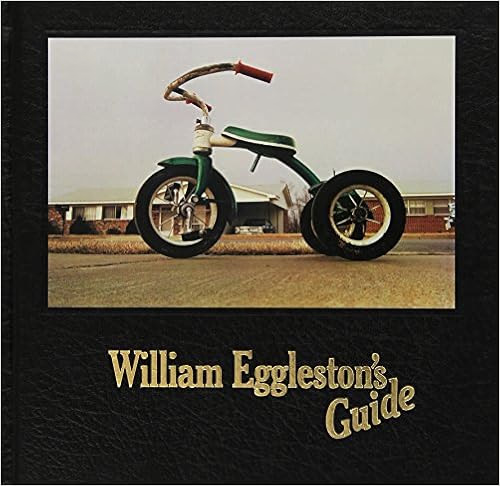
William Eggleston / John Szarkowski (author) "William Eggleston's guide" Museum of Modern Art (2002) ( Amazon )
 solder
solderI brought a photo book called "William Eggleston's Guide."
I love photography so much that I even went to photography school when I was a student. The first people to influence me were photographers from the 90s, like Masashi Sanai and Takashi Homma, and also people into girly photography. I took so-called static photographs.
However, as I took various photos at photography school, I gradually became interested in people like Daido Moriyama and Takuma Nakahira who took really rough photos - black and white, high contrast, messy compositions, and shots at an angle, and I started taking only those kinds of dynamic photos.
It was around that time that I picked up this photo book and realized how much I loved these quiet photographs, and it felt like I was going back to my roots. It reminded me of the posture I should take when taking a photograph, or the feeling of looking at every detail of the lens, every nook and cranny.
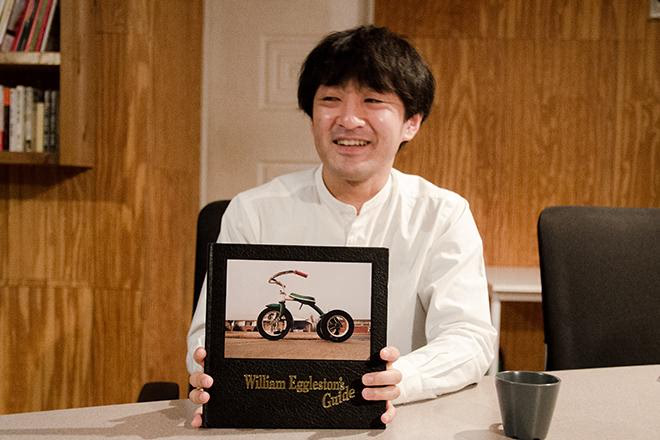
 solder
solderWilliam Eggleston is a pioneer of the "New Color" genre, and in the 1970s, when art photography was dominated by black and white, he exhibited color photographs at the Museum of Modern Art (MoMA) in New York, sparking a debate about whether color photography could also be considered art. MOMA published this photobook at that time.
Originally, he admired Henri Cartier-Bresson (a photographer who takes photos of the "decisive moment," such as the moment when a person jumps over a puddle), but at some point he started taking calm, perfectly composed photos. I think that all the works in this book are very well-balanced.
It's a normal landscape, but the composition is such that you never get bored no matter where your eyes go. I don't think it's calculated that my hands sometimes appear in the photos, but it just feels right. I had a similar experience, so I can relate to the author. Even now, I look back on this photo book whenever something happens.
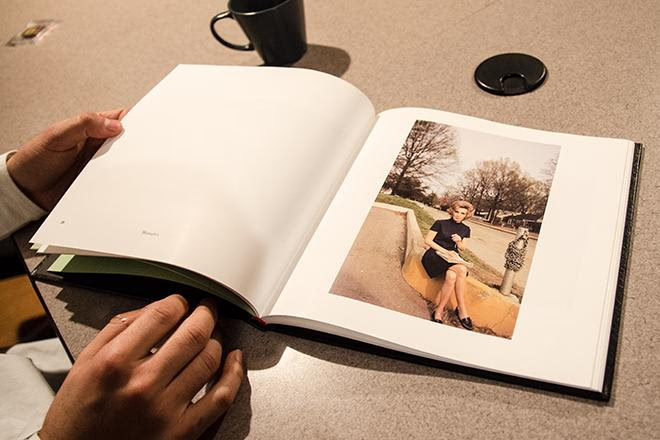
p.38 Location: "Memphis"
 Murakami
MurakamiWhen was the photo taken?
 solder
solderThe photos are from the 1970s, a long time ago, but they haven't faded. I think he's still a photographer who is relevant today. During this time, the art world was moving towards realism, or trying to pursue something more realistic, and photography seemed to overlap with that, so I think it was an interesting time.
I also really like the fact that all the photographs are on the right-hand page of a double-page spread, with only the place and location written on the left.
 Murakami
MurakamiYou can definitely concentrate on one piece at a time.
 solder
solderI really like the photo of the tricycle on the cover, the position of the clouds is perfect. Sometimes there are things in the photo that make me wonder what's going on, but I think that's nice too. Anyway, I like the composition and the binding of this book.
Immersed in the band's worldview, memories of the live performance that made me cry come back to me
"Channel Guide Tokyo Incidents Official Book" (recommended by Inui Yako)
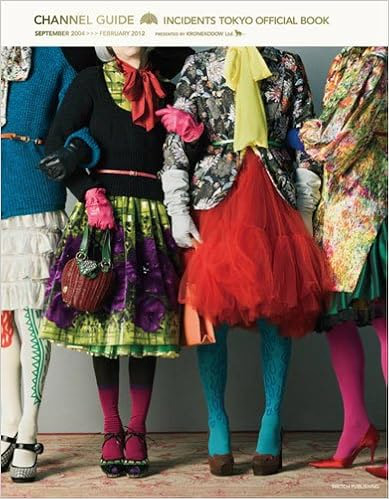
Kuronekodou (author) "Channel Guide Tokyo Incidents Official Book" Switch Publishing (2012) ( Amazon )
-
 Dry
Dry I brought along the official book "Channel Guide" from Shiina Ringo's band "Tokyo Incidents." The band broke up five years ago, but this was the first and last official book released, featuring footage from their final live tour, "Discovery," in 2011.
I went to this tour with my mom when I was 16, and it was my first time seeing Shiina Ringo live, and I burst into tears, saying, "She's the real deal!" This live tour was so cool, I even have the DVD. Tokyo Incidents' live shows are often praised in music magazines for their high level, and they changed costumes about four times, and the lighting and video were amazing, so it was a really fun concert.
The first half of the book has a lot of photos, from the tour before the group broke up, to recording photos, to off-shots of the group on the move, and I look at them and think, "So cute!" (laughs) In the second half, there are interviews with the backstage art, lighting, makeup, and costume staff.
My favorite point is that Ringo-chan doesn't have a big smile on her face on TV, but in this book she looks really happy and having fun. I feel relieved that she looks like she's having fun, so I put a bookmark in here (laughs).
I remember the time I went to the concert, and when I look at the photos, I remember how good it was and how much fun it was. Oh, this is cute, here. (Opening a page of my favorite photos) Sorry for being such an explosive hobbyist (laughs).
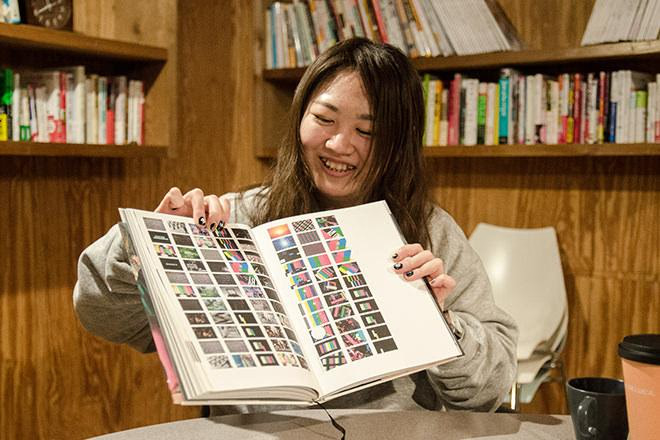
-
 Haga
Haga You really like Shiina Ringo, don't you? (laughs)
-
 Dry
Dry At first, my older sister was a fan, so I was influenced by her. I started to like her when I was in high school, and I wanted to be like Shiina Ringo in every face and voice (laughs). I also joined her fan club.
-
 Haga
Haga I have no idea how old Shiina Ringo is. Maybe her age is unknown.
-
 Dry
Dry I think I was around 35 or 36 years old. The person who has been in charge of makeup for me exclusively for about 7 years said in an interview that they wanted to create an unidentifiable look, and that the theme was to transcend gender and make her look like she always had a different face no matter when you look at her.
-
 Murakami
Murakami It's true that when I hear Shiina Ringo's face, I can't really think of anything in particular. Well, I'm not an expert on her to begin with. I can tell when I hear her singing voice, though.
A photographer who continued to take pictures of the city with his twin-lens reflex camera was discovered
"Vivian Maier Street Photographer" (reviewed by Keisuke Haga)
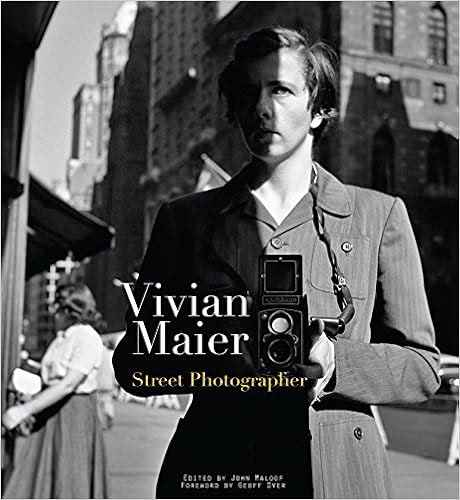
Vivian Maier (author) “Vivian Maier Street Photographer” powerHouse Books (2011) ( Amazon )
-
 Haga
Haga I brought along a photo book by Vivian Maier, a photographer who has only recently been discovered.
She was a photographer who took about 150,000 photos before she died, mainly in New York and Chicago... but she wasn't a photographer by profession, she was just an ordinary person, she never told people that she was a photographer, and she hardly ever exhibited her work. She always walked around the city with a twin-lens reflex camera hanging from her neck, taking photos, and she kept saving the photos and negatives she took, and I found her story fascinating.
The photos were discovered when her belongings were put up for auction in the city, and a young man happened to win a box containing a large number of negatives. After seeing the negatives, he noticed their interesting nature and posted them on social media. This caused a stir and spread all over the world.
Vivian Maier's photographs have a unique perspective, for example, a photo of people eating from a distance, or a photo of a person riding a horse through the streets of New York, and there are many photos that make you wonder what kind of scene they are.
Some people say that if she had published her photographs while she was still alive, she would have been one of the most representative photographers of the 20th century. Two years ago, a film called "Looking for Vivian Maier" was made, which I went to see.
She worked as a babysitter for about 40 years, didn't have many friends, and never married. She just went out to the city, took photos, and then worked again. That was the kind of life she led... Was taking photos her only way to connect with the city and people, or was that kind of expression her purpose in life? I felt that she was the kind of person who was doing that, as proof that she was alive.
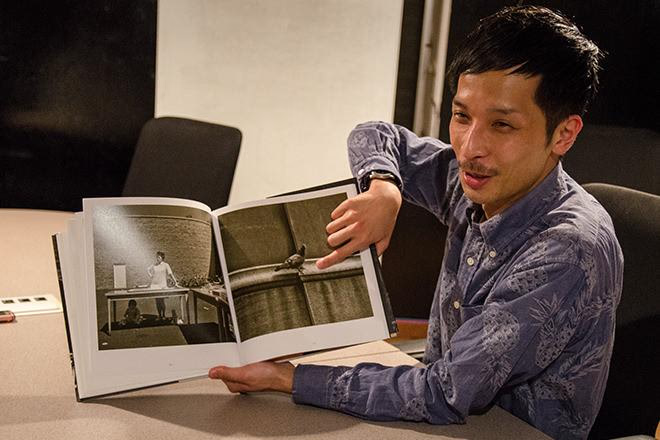
-
 Murakami
Murakami Are you from the 20th century?
-
 Haga
Haga Yes. It seems he took photos for about 40 years, starting from the 1950s. There are many photos of himself, and there is a section at the very back of the photo book that features photos of himself. He also took photos of himself reflecting himself in windows around town or in mirrors, which I thought was interesting.
-
 Dry
Dry A stylish selfie? Did you take the cover photo yourself?
-
 Haga
Haga This is also a selfie. I think the balance of the shadow on the face is really interesting. I took photos of people up close, so I wonder if they got angry after I took the photo (laughs).
-
 solder
solder I'm sure they would be angry (laughs).
-
 Haga
Haga I take pictures of their angry faces too, and those photos are great, but sometimes the person being photographed doesn't even realize it, and that's what makes it interesting.
After the reading group
What did you think?
It seems that many of the books were deeply etched in each person's life, such as memories from their school days, unforgettable live performances, and books that looked back on the origins of taking "photos". Spreading out the books we brought and sharing our impressions was a fun time that only visual books can provide.
Next time, we will introduce books with the theme of "a certain place." We plan to introduce books about a specific place, whether it is domestic or overseas. Until next time!
